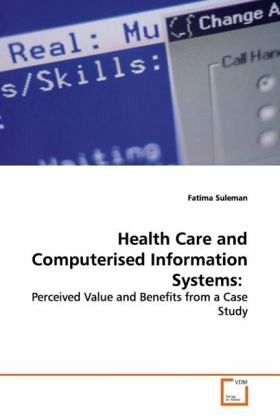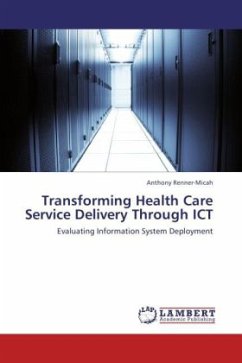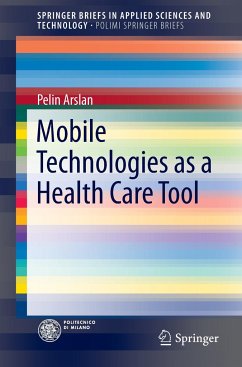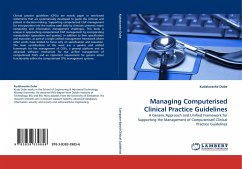
Health Care and Computerised Information Systems:
Perceived Value and Benefits from a Case Study
Versandkostenfrei!
Versandfertig in 6-10 Tagen
32,99 €
inkl. MwSt.

PAYBACK Punkte
16 °P sammeln!
Health information systems are continually beingchanged and improved. The move from paper-basedsystems to computerized systems has been rapid. Yetthe impact of these systems on end users is nottotally clear. Few studies have looked into users perceptions of computerized information systems as totheir value and benefit. The purpose of this book wasto use a case study to determine users perceivedvalues of a new system (as a surrogate measure of asuccessful system, as no primary measure of successexists currently), by evaluating the migration of apaper-based system used by the Bureau of YouthServ...
Health information systems are continually being
changed and improved. The move from paper-based
systems to computerized systems has been rapid. Yet
the impact of these systems on end users is not
totally clear. Few studies have looked into users
perceptions of computerized information systems as to
their value and benefit. The purpose of this book was
to use a case study to determine users perceived
values of a new system (as a surrogate measure of a
successful system, as no primary measure of success
exists currently), by evaluating the migration of a
paper-based system used by the Bureau of Youth
Services and Delinquency Prevention (BYSDP) to a
computerized platform. The perceived value of a
computerized information system is hypothesized to
relate to the degree to which functionalities are
met, as well as increased user satisfaction and job
satisfaction. Perceived value is also related to
positive impact of the computerized information
system on work, better user adaptation and positive
user attitude (Section One). Section Two assesses the
reliability of the tools used in the case study using
Classical Test Theory and Item Response Theory.
changed and improved. The move from paper-based
systems to computerized systems has been rapid. Yet
the impact of these systems on end users is not
totally clear. Few studies have looked into users
perceptions of computerized information systems as to
their value and benefit. The purpose of this book was
to use a case study to determine users perceived
values of a new system (as a surrogate measure of a
successful system, as no primary measure of success
exists currently), by evaluating the migration of a
paper-based system used by the Bureau of Youth
Services and Delinquency Prevention (BYSDP) to a
computerized platform. The perceived value of a
computerized information system is hypothesized to
relate to the degree to which functionalities are
met, as well as increased user satisfaction and job
satisfaction. Perceived value is also related to
positive impact of the computerized information
system on work, better user adaptation and positive
user attitude (Section One). Section Two assesses the
reliability of the tools used in the case study using
Classical Test Theory and Item Response Theory.












